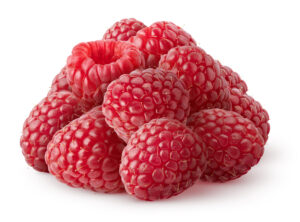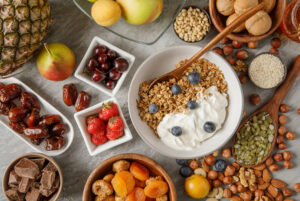***Take 20% off full price purchases*, use code summer24
***Take an extra 5% off products already on sale*, use code XTRA5
*Full details.
Plus, FREE shipping sitewide!
How To Stay Healthy By Avoiding Toxins in your Food – Part 1
- posted by Corinna
- | July 6, 2023
There are two separate, yet integrated, pathways one can take to stay healthy. The first pathway may look like adding positive things to our life, like exercise or healthy food. The second pathway is often overlooked, however, for a more all encompassing idea of health, the addition of “positive” is not enough. True health calls for the removal of negative factors, such as exposure to chemicals and toxins. This article’s main focus will be the second pathway. How to stay healthy by eliminating pesticides, chemicals, and molecules that have a negative effect on health upon entry to the body. When considering health, it is important to think about the ways in which bad (and good) factors can enter our bodies. Eating, drinking, and breathing all play immediate, key roles in life. What is being physically consumed is often the first thing that comes to mind when discussing health, therefore, avoiding toxins in food and avoiding toxins in drinking water will both be addressed. It is also important to consider the immediate environment which one inhabits. For most people, that entails the indoor home environment, which is influenced by home building materials and the furnishings, like mattresses, bed frames, sofas, and carpets used to make a house a home. Last, the products used on skin when bathing or cleaning will be discussed. In order to fully explore each of these topics, there will be four separate articles on eliminating toxins from one’s life. Please also read the following articles on water, air/ home furnishings, and body products as this article will only discuss food.
Food
Over the last century, our culture has discovered  advanced methods to increase food production through the extensive use of chemicals. While farmers of the past were subject to reduced crop output from pests and/or from lack of nutrients, farmers now can eliminate these problems chemically. By treating fields with insecticides, they can easily kill pesky bugs that could chew through their product. By treating with herbicides, weeds that would overrun and choke out crops wither away. Additionally, treating crops with artificial fertilizers increases crop yields.
advanced methods to increase food production through the extensive use of chemicals. While farmers of the past were subject to reduced crop output from pests and/or from lack of nutrients, farmers now can eliminate these problems chemically. By treating fields with insecticides, they can easily kill pesky bugs that could chew through their product. By treating with herbicides, weeds that would overrun and choke out crops wither away. Additionally, treating crops with artificial fertilizers increases crop yields.
These chemical treatments inevitably end up IN our foods, as what is called pesticide residue. And unfortunately, while pesticides are intended to kill pests, evidence shows they can also harm humans. The harm caused to humans can be categorized in different ways. These include whether it is irritating to the eyes and skin, affects the nervous system, is carcinogenic (causes cancer) or is an endocrine disruptor (has the ability to change and affect our hormones). And that last one, being an endocrine disruptor, should sound a lot scarier to you than it might! Our hormones regulate our entire body, our energy levels, our fertility, our growth and development as adolescents, etc. Disrupting our hormones means that we will not feel as well as we should. Our energy levels will be lower, mood made worse, mental clarity lost, and physical performance affected. The Environmental Protection Agency(EPA) has a method to evaluate pesticides for how carcinogenic they are as well as an endocrine disruptor screening program where they are learning more about how chemicals affect our bodies.
To regulate the use of pesticides in food production, the EPA determines the amount they consider “safe” for consumption (is any amount safe?) and then sets a tolerance for pesticide residues in food. This is the amount they’ve determined will not harm a person if it remains in the food after application on the crop. Pesticides have to be registered and tolerances are given for most of them. Note: it is not a question of whether or not the pesticide is safe for human health (none of them are), it is a question of at what level it becomes OBVIOUSLY dangerous to human health. Do you trust that the pesticide tolerance in one food is within a safe limit? If you do, can you trust that ALL of the pesticide residue in ALL of the food you eat is within a safe limit? I don’t.
 For example, one study found a sample of raspberries to have 39 different pesticide residues on them. Each one has its own tolerance, but there is not an overall tolerance for all pesticides. Research conducted through government agencies is granular and looks at the danger of single pesticides to determine these limits, but does not seem to address the fact that we could be potentially eating residues of hundreds of different pesticides in most to all of our food (reportedly, 75%-85% of food has pesticide residues). Lately, glyphosate has been more in the media because of research linking it to cancer, endocrine disruption (especially fertility issues), liver disease, kidney disease, microbiome disruption (disruption of the extremely important good bacteria in the gut), and increased risk for ALS. Over 80% of the population tested positive for glyphosate in their urine and over 90% of the population tested for some pesticides in their urine and blood. Switching to an organic diet can quantifiably reduce the amount of pesticides tested in our urine. Additionally, people who eat an organic diet were associated with a much lower risk of cancer.
For example, one study found a sample of raspberries to have 39 different pesticide residues on them. Each one has its own tolerance, but there is not an overall tolerance for all pesticides. Research conducted through government agencies is granular and looks at the danger of single pesticides to determine these limits, but does not seem to address the fact that we could be potentially eating residues of hundreds of different pesticides in most to all of our food (reportedly, 75%-85% of food has pesticide residues). Lately, glyphosate has been more in the media because of research linking it to cancer, endocrine disruption (especially fertility issues), liver disease, kidney disease, microbiome disruption (disruption of the extremely important good bacteria in the gut), and increased risk for ALS. Over 80% of the population tested positive for glyphosate in their urine and over 90% of the population tested for some pesticides in their urine and blood. Switching to an organic diet can quantifiably reduce the amount of pesticides tested in our urine. Additionally, people who eat an organic diet were associated with a much lower risk of cancer.
Eating a fully organic diet is much more expensive than a conventional diet, and oftentimes not completely practical. But not all foods are equally doused in pesticides. Consider buying organic when the conventional variety is known to be heavily treated with pesticides. Otherwise, conventional might be the better purchase if the product isn’t treated as heavily. Consult the information below for which foods are best to buy organic and which are best to buy conventional so you can leverage your money while prioritizing your health.
Animal Products
In regards to food other than produce, livestock production is responsible for 37% of pesticide application. If you can choose organic meats and dairy, you will also be avoiding a lot of pesticides. Additionally, animal based products likely have additional additives like hormones and antibiotics.
Produce
The EWG (Environmental Working Group) has a “dirty dozen” of produce that has the highest levels of pesticide residue, including strawberries, spinach, kale, peaches, pears, nectarines, apples, grapes, peppers, cherries, blueberries and green beans. 
Conversely, the produce with the least amount of pesticide residue is called the “clean fifteen”. It includes avocados, sweet corn, pineapple, onions, papaya, sweet peas, asparagus, honeydew melon, kiwi, cabbage, mushrooms, mangoes, sweet potatoes, watermelon and carrots. It might not be worth choosing organic when buying this produce.
Grains/Starch
Oats, soybeans, rice, and wheat are other crops that use heavy pesticides.
If you are interested in other ways to reduce toxins in your life for your optimal health, read our other articles on how to stay healthy by avoiding toxins in your water, avoiding toxins in your home environment and air (our passion: organic mattresses, natural bed frames, organic sofas, and natural carpets) and avoiding toxins in your body products.
